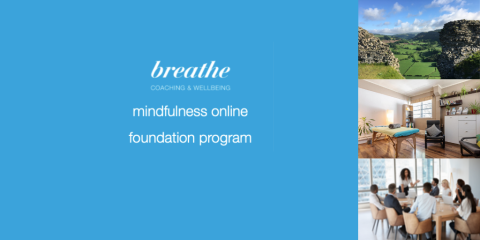
Mindfulness at work resources
The books listed here provide the tools, frameworks, and inspiration for our mindfulness at work foundation program. Find out more about our program today.
Altered Traits by Richard Davidson and Daniel Goleman
This book is probably the most significant scientific deep dive into how different mindfulness techniques impact our health and wellbeing. It sifts through and separates the strong from the weak research and provides the business case for practising a range of different mindfulness techniques under expert supervision.
If you want to be more self-aware, focussed, resilient, self-compassionate, physically and emotionally well and compassionate toward others, mindfulness includes a toolbox of techniques. Not all will be appropriate for you. Not all will work. And the object of mindfulness is not to achieve the outcomes of balance, fulfilment, energy, focus and calm, but rather to be more self-aware and acquainted with the present compassionately and lightly. The benefits are happy side-products.
Mindsight: the new science of personal transformation by Daniel Siegel
This book explores mindfulness from a psychiatrist’s perspective. Siegel’s model of “mindsight” explores a different way of thinking about mindfulness
- Strengthening the hub of awareness – applying the breaks and calming a skittery mind
- Balancing the left and right hemispheres
- Reconnecting the mind and body
- Making sense of our internal stories and habitual patterns
- Making sense of our mind and finding meaning and fulfilment
- Learning to become accepting of our multiple selves
- The neurobiology of “we” – connecting to others
- Existential concerns – exploring the schemas which we create to handle uncertainty, change and mortality, and how they can undermine wellness and living a full life
Atomic habits by James Clear
This book is an excellent exploration of creating and embedding healthy new habits. Embedding mindfulness at work and home requires some grit and determination. It requires a plan, tenacity and help from others.
The book explores some simple ideas to nudge ourselves toward healthy new habits. Embedding new habits means setting aside time to practise, creating rituals, lingering in the felt experience of change, sharing with others and most importantly, reflecting on the change you experience.
Mindfulness does not work as an academic experience. Understanding frameworks and science help motivate our change. But change happens a neuron and synaptic connection at a time and requires patience.
If your mindfulness techniques are sometimes dull, repetitive and painful, there’s a good chance you are doing something right! You will also feel balanced, connected, light, and focussed as you practise. That’s great. But other times, leaning into the challenging emotions and thoughts and sitting with them for a while can be the most liberating part of a mindfulness program.
Neurodharma by Rick Hanson
Rick Hanson explores how neuroscience and psychology play catch-up to eastern contemplative frameworks. The book provides a similar framework to our program and teaches some valuable techniques to help us get more acquainted with ourselves. The framework is:
- Steadying the mind – pressing the breaks to slow down and focus
- Warming the heart – self-compassion techniques
- Fullness – reflecting on our inbuilt negativity bias and our conditioned patterns (childhood, from ancestors, our education and so on). He explores techniques to become more aware of these triggers and how to learn and grow from them
- Wholeness – building on from “fullness”, he teaches positive psychology and other tools to helps us feel “enoughness”, feeling good in our own skin, understanding how tuning into our body can help reveal our values and what’s meaningful
- Nowness – building greater presence and enjoying the energy from being in flow and fully absorbed in what we are doing
- Allness – in this section, he explores the interconnectedness of all things. In later parts of our program, we explore emotional contagion and the flow of ideas and influences between groups of people and our environment
- Timelessness – In the final section, he provides fascinating ideas about time and how we relate to it
To find out more about our mindfulness at work programs contact us today



